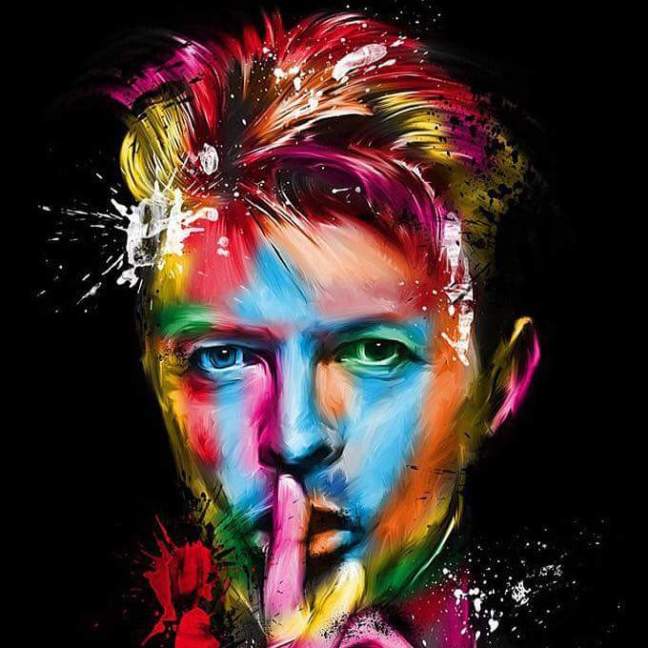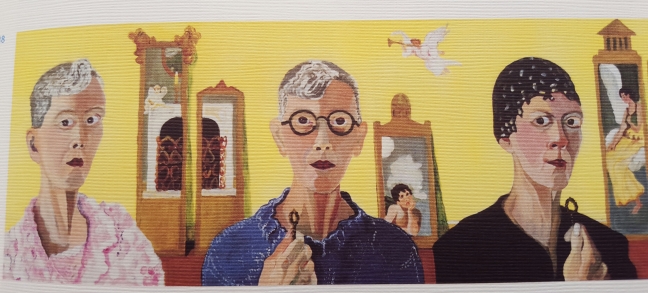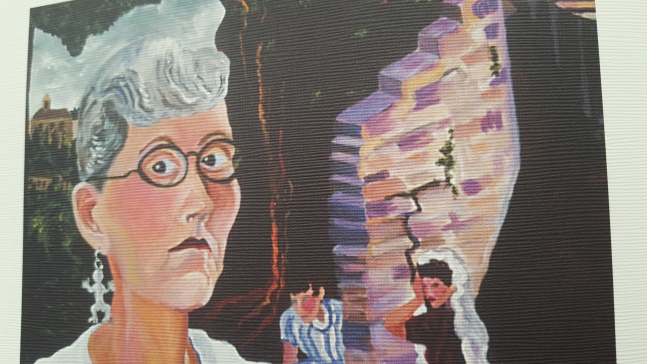 Like many people, I was shocked and saddened to hear of the death of David Bowie two weeks ago. I vividly recall a time when I was maybe eight or ten years old, sitting on the floor cross legged, mesmerized and fascinated by David Bowie on television performing Space Oddity. Even at a young age, though, he never struck me as “odd.”
Like many people, I was shocked and saddened to hear of the death of David Bowie two weeks ago. I vividly recall a time when I was maybe eight or ten years old, sitting on the floor cross legged, mesmerized and fascinated by David Bowie on television performing Space Oddity. Even at a young age, though, he never struck me as “odd.”
Maybe that is because I was raised in a household that, while very conventional on the outside, was very encouraging of difference and creative expression. At this same time in my life, my mother was a Jewish divorced working mom, paving a rather feminist path in the completely (then) male dominated field of fashion design. My mom was both artistic and tough, so tough that she was nicknamed “Rocky” by her male colleagues as a shortened version of her name Rosalind. Later, my mom met and married my stepfather, who was and is an Iraqi surgeon. He too always sought a higher understanding beyond what was expected of him culturally, always reading and searching and learning, and ultimately dubbing himself “a yogi trapped in the body of an Orthopaedic Surgeon.” Even my brother was a poet, writer, artist and profound thinker, before the demons that drove his creativity would drag him into the world of drugs that ultimately claimed his life.
My sister and I are definitely the most outwardly “conventional” of our family. Despite that, I always welcomed being different and chose to spend time with people who were at least as different as I, often much more so. I always craved spending time around the free spirits, artists, musicians, and those who paved their own special paths in life. After David Bowie died, one of my Facebook friends commented that Bowie had shown him that it was okay to embrace his own weirdness, and I would imagine that a lot of people in my circle of friends could have said that.
Bowie’s music was never just about the music. It was as much about his costuming and makeup, his movements, facial expressions and the messages in his lyrics. It was the all encompassing ART of what he did that spoke to us. And he did it in such an uncompromising way that we felt that it was okay to be whatever we were on the inside too. Weird or not.
Years after my mother married my stepfather, she went back to college to get a Bachelors of Fine Arts Degree from the School of the Art Institute, after which she became an acclaimed artist in the Chicago area before becoming ill with a rare degenerative neurological disease.
While my mom was still physically able to paint, she threw herself into her art, often almost obsessively. She painted large, colorful, narrative pieces that reflected her feelings about race, culture and religion, gender roles and social status. As her illness slowly took away her ability to move, her work began to reflect her feelings about her own immortality. She rarely spoke of the process of dying and, yet, as we look back on her art during that time, we can see the obvious signs that she was thinking about it. Images of heaven and clouds, more obvious religious imagery and reflections of members of our family who had already passed away became common elements in her pieces.
 Likewise, we all know that David Bowie released his final musical gift to us on his birthday, a mere few days before his death. On that album we find the song “Lazarus” and its accompanying music video. If you haven’t yet seen it, I urge you to do so as it is vivid and moving. Clearly foreshadowing his imminent death, he writhes on what appears to be a death bed and states “look at me, I’m in heaven.” What struck me in his video and in my mother’s artwork years ago, was that both dispense with the illusions of pretty appearances. My mother was always one to look her best, and yet as she became more and more ill, she did not sugar coat her deteriorating appearance in her artwork. Similarly, Bowie does not hide his illness behind colorful makeup and costuming. Death is not pretty. And as my mother used symbolism throughout her artwork, so does Bowie in his “Lazarus” video: his eyes are covered, representing the not seeing/knowing where he is going; a hypodermic needle possibly representing his illness can be seen; and his appearance and disappearance through an armoire as if magically coming and going is prominently featured.
Likewise, we all know that David Bowie released his final musical gift to us on his birthday, a mere few days before his death. On that album we find the song “Lazarus” and its accompanying music video. If you haven’t yet seen it, I urge you to do so as it is vivid and moving. Clearly foreshadowing his imminent death, he writhes on what appears to be a death bed and states “look at me, I’m in heaven.” What struck me in his video and in my mother’s artwork years ago, was that both dispense with the illusions of pretty appearances. My mother was always one to look her best, and yet as she became more and more ill, she did not sugar coat her deteriorating appearance in her artwork. Similarly, Bowie does not hide his illness behind colorful makeup and costuming. Death is not pretty. And as my mother used symbolism throughout her artwork, so does Bowie in his “Lazarus” video: his eyes are covered, representing the not seeing/knowing where he is going; a hypodermic needle possibly representing his illness can be seen; and his appearance and disappearance through an armoire as if magically coming and going is prominently featured.
While my mother’s illness was very obvious, she never really discussed what it was like to know she was dying. Bowie, too, must have known for quite a while that he was dying and yet never made that information public. Was there something inside both of them that caused them to take all of their introspection and pour it into their art? Was that the only way they knew how to express their thoughts? Bowie’s last album was clearly a gift to the world. At a more local level my mom, too, viewed her art as a gift to others. She wanted it to be seen and appreciated long after she was gone. They both clearly knew that their art was their legacy. What a gift.
I welcome your thoughts on this reflection.
Sue O’Connell, J.D., College Search Counseling and Success Coaching
